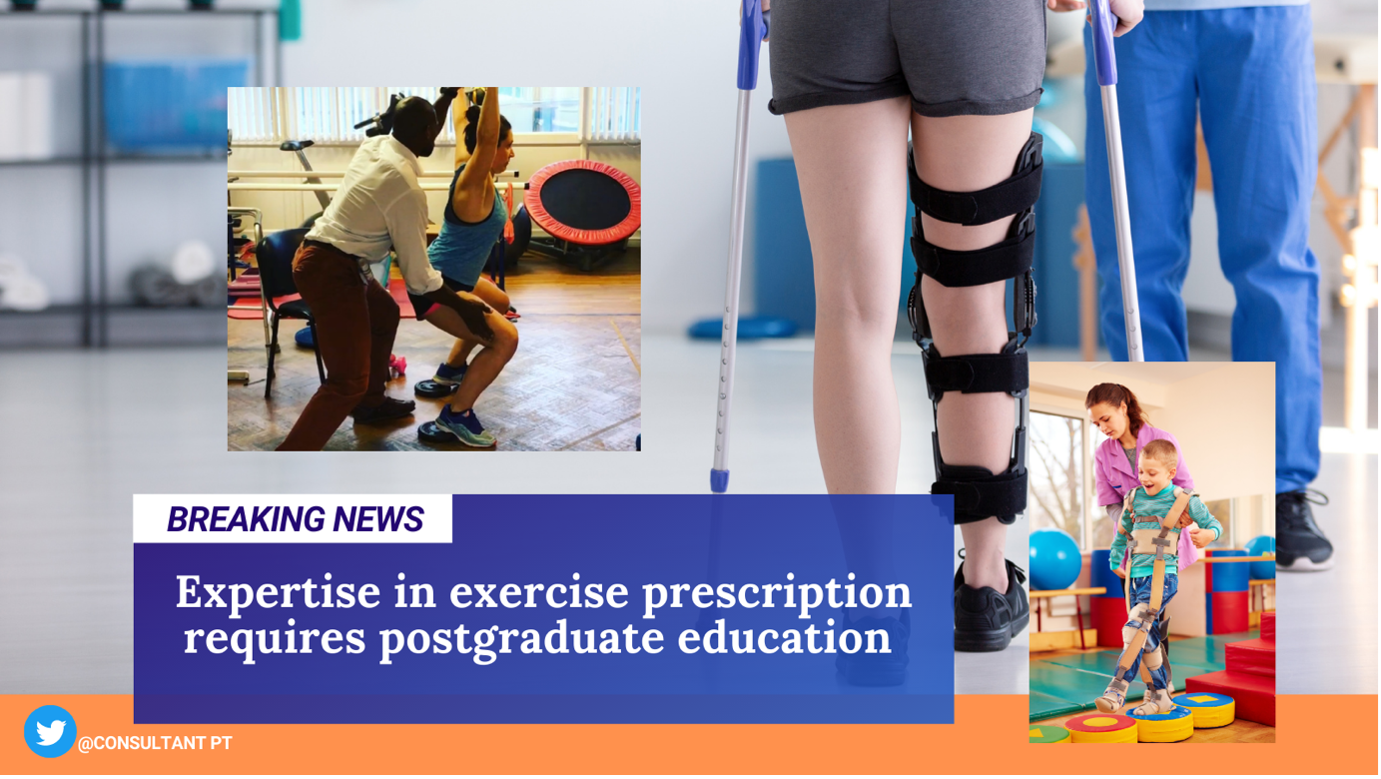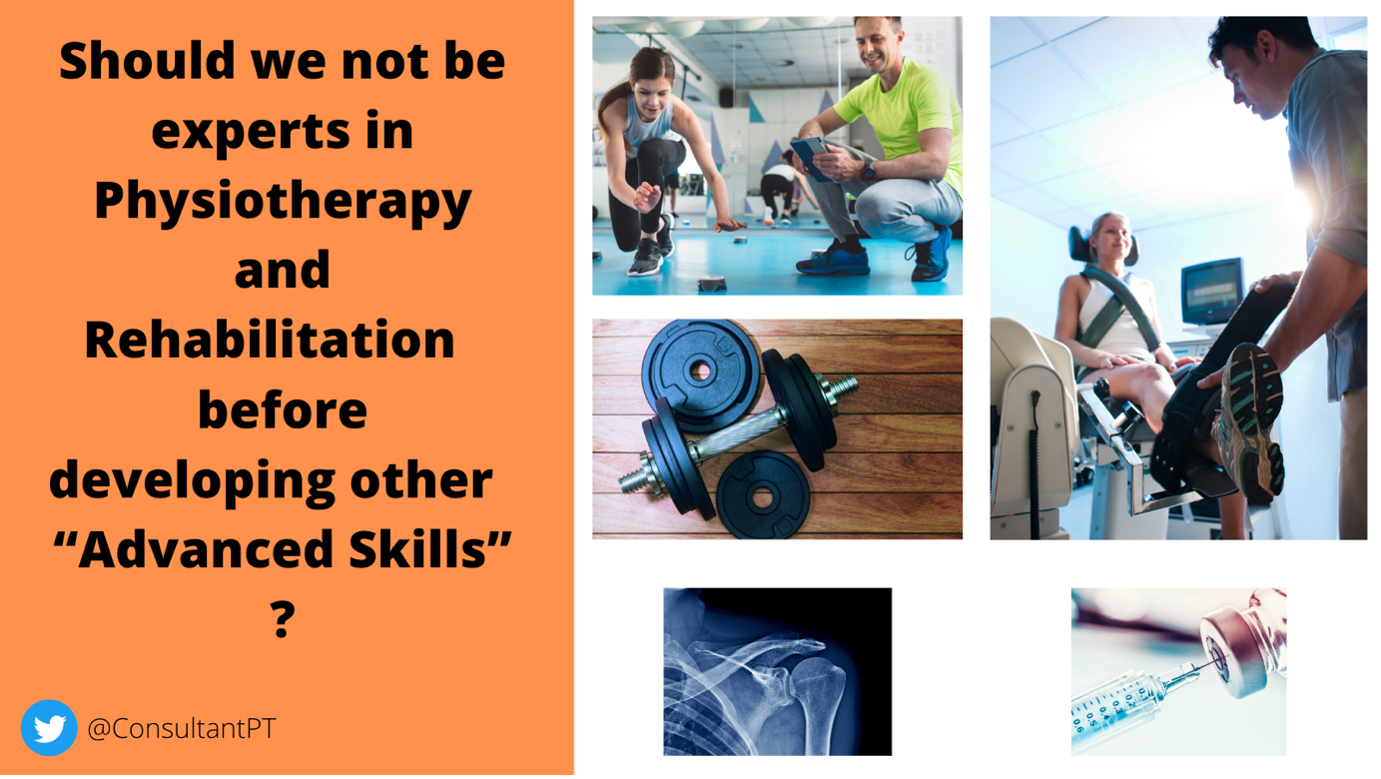 This is a polarising topic and one in which there are multiple perspectives and positions on this subject. However, for the purposes of brevity I will restrict my analysis and comparisons to physiotherapists and strength and conditioning (S&C) professionals working with athletic populations.
This is a polarising topic and one in which there are multiple perspectives and positions on this subject. However, for the purposes of brevity I will restrict my analysis and comparisons to physiotherapists and strength and conditioning (S&C) professionals working with athletic populations.
Historically the physiotherapist has reigned ‘top dog’ in the management hierarchy of the injured athlete, and for that matter any individual that has needed exercise as a method to ameliorate illness, disease or to improve physical function. Physiotherapy as a profession has been in existence for well over 100 years since its humble beginnings at the outbreak of world war one (1). This is in stark contrast to the strength and conditioning profession which only in the past 20 years has seen significant strides forwards in regard to its professional standing within professional sport and with the general public.
Historically, exercise prescription has been the preserve of the physiotherapy profession as a default. However, this precedent has not kept pace with the professional developments in S&C, exercise science and S&C research. I would argue that the physiotherapy profession has fallen out of step with the emerging S&C profession in some regards. This is evident in the wanton clamour for short weekend style courses in S&C training by sectors of the physiotherapy profession to fill a gap in knowledge and expertise.
If all that was required was a short period of upskilling to improve our relationship with exercise prescription, then this would be reasonable. However, a short course over two days, really is an insult to those S&C professionals that have devoted time, effort and financial resources to their expertise. Many will have studied exercise science, or S&C at undergraduate level and then gone on to postgraduate study and advanced professional accreditation in the delivery of physical preparation programmes.
The physiotherapist wanting to use exercise as a primary mode of intervention and its associated sub specialities; for example in skill acquisition, programming, biomechanics, physiology, exercise techniques, and applied research methods cannot “hope” to acquire this level of expertise without a protracted commitment to continued professional development. A common argument I hear from the profession is that the ‘grounding’ in basic clinical sciences allows practitioners to circumvent the need for extensive training. This would be true if our undergraduate training prepared fledging physiotherapists with a basic grounding in exercise prescription and training science. However, we know that in the vast majority of cases(2),(3),(4) this is not so!
However, the story does not end here
Even when a physiotherapist has chosen to sub-specialise (for example musculoskeletal physiotherapy) there is not a profession-wide drive for further postgraduate study. If the therapist embarks on postgraduate study, an exercise related degree is often not the type of study chosen because of the poor career progression and remuneration associated with rehabilitation. Instead, programmes of study to improve medical diagnostics and triage skills is the preferred option (6). This is in stark contrast to the S&C profession and medicine. In these disciplines it is a rite of passage to engage in formal postgraduate study to gain mastery of your chosen speciality and to remain competitive for employment. This is not so in physiotherapy largely because of our complacency “that we would always be the first choice for exercise prescription expertise”.
This deficit in professional capability is nowhere more evident than in the rehabilitation of athletic populations. This area of musculoskeletal practice is an advanced practice skill but now extends beyond the capabilities of most physiotherapists. This lack of expertise often leads to the premature curtailment of rehabilitation interventions and contributes towards the physiotherapists’ under-confidence to progress the athlete towards a full return to sport. So in practice, we see the athlete either handed over to their strength and conditioning team as they near return to sport or the athlete discharged and left to manage their own return to sport.
So, who are the winners?
So, I think it is clear who currently has the lion’s share of expertise in the return to full physical function of the injured recreational and professional athlete. At present our profession does not appear to recognise the value of advanced training in exercise and its related disciplines. If undertaken at all, advanced training in injection therapy, radiology, pharmacology and first contact triage appears to be the norm. However, effective exercise prescription “a core physiotherapy skill” and its related sub disciplines is not seen as expertise worthy of postgraduate education or advanced practice.
I believe that until we address the inherent gaps in our training and postgraduate education we will not be able to provide anything more than basic exercise prescription. Rehabilitation of athletes (recreational and professional) must be recognised as an advanced practice skill requiring specialist training. Without this recognition, physiotherapists can only ever be considered technicians in the functional restoration of the patient/athlete.
Author and Affiliations:
Mr Uzo Ehiogu MSc, BSc, BSc MMACP
Clinical Teaching Fellow
Specialist Musculoskeletal Physiotherapist
Royal Orthopaedic Hospital NHS Foundation Trust
07428525066
References:
- Bonfiglioli Stagni S, Tomba P, Viganò A, Zati A, Benedetti MG. The first world war drives rehabilitation toward the modern concepts of disability and participation. Eur J Phys Rehabil Med. 2015 Jun;51(3):331–6.
- O’Donoghue G, Doody C, Cusack T. Physical activity and exercise promotion and prescription in undergraduate physiotherapy education: content analysis of Irish curricula. Physiotherapy [Internet]. 2011 Jun 1 [cited 2021 Feb 22];97(2):145–53. Available from: https://www.sciencedirect.com/science/article/pii/S003194061000091X
- O’Donoghue G, Cusack T, Doody C. Contemporary undergraduate physiotherapy education in terms of physical activity and exercise prescription: practice tutors’ knowledge, attitudes and beliefs. Physiotherapy [Internet]. 2012 Jun 1 [cited 2021 Feb 22];98(2):167–73. Available from: https://www.sciencedirect.com/science/article/pii/S0031940611004159
- Yona T, Ben Ami N, Azmon M, Weisman A, Keshet N. Physiotherapists lack knowledge of the WHO physical activity guidelines. A local or a global problem? Musculoskeletal Science and Practice [Internet]. 2019 Oct 1 [cited 2021 Feb 22];43:70–5. Available from: https://www.sciencedirect.com/science/article/pii/S2468781219300815
- Bithell C. Entry-level physiotherapy education in the United Kingdom: governance and curriculum. Physical Therapy Reviews [Internet]. 2007 Jun 1 [cited 2021 Feb 22];12(2):145–55. Available from: https://doi.org/10.1179/108331907X175041
- Fennelly O, Desmeules F, O’Sullivan C, Heneghan NR, Cunningham C. Advanced musculoskeletal physiotherapy practice: Informing education curricula. Musculoskeletal Science and Practice [Internet]. 2020 Aug 1 [cited 2021 Feb 22];48:102174. Available from: https://www.sciencedirect.com/science/article/pii/S2468781220300254
Competing interests: None